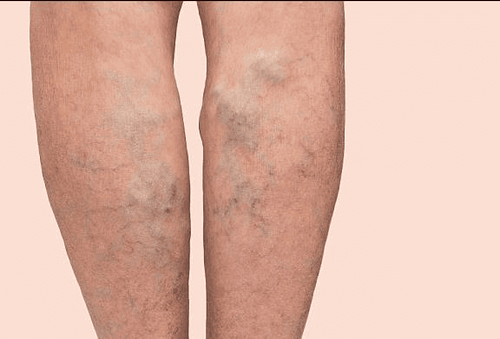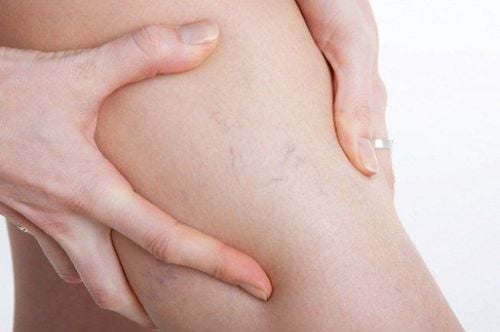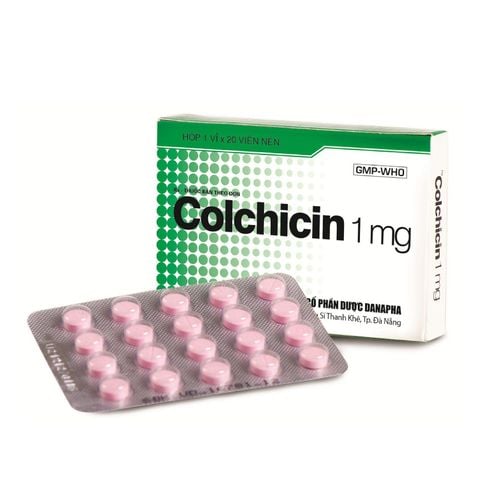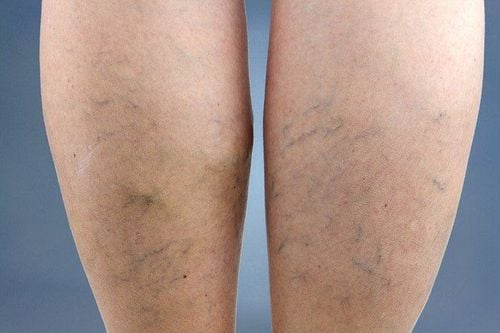This is an automatically translated article.
Posted by specialist I Nguyen Hong Phuc and Doctor Vo Ha Bang Suong - Department of Medical Examination & Internal Medicine - Vinmec Phu Quoc International General HospitalThe goals of treatment for patients with chronic venous disease are to improve symptoms, reduce edema, treat atherosclerosis, and heal ulcers. Accordingly, the measures taken should have the good support of medical staff in coordination with patients to improve their efficiency and quality of life.
1. Treatment goals for venous disease of the lower extremities
Treatment goals for patients with chronic venous disease include improvement of symptoms, reduction of edema, treatment of atherosclerosis, and ulcer healing. Measures should be taken that involve the patient and medical staff working together to improve the patient's effectiveness and quality of life. Thera Can be used in any patient with symptoms and signs of chronic venous disease. Patients whose symptoms are refractory to venous compression therapy or who cannot tolerate compression therapy may benefit from systemic therapy. Skin symptoms as a result of chronic venous disease: Dry, itchy, eczematous skin treated with various dermatological agents. Contact dermatitis occurs infrequently, so topical products with common sensitizers should be avoided. Venous ulcers: Treated with a combination of ulcer wound management and venous compression therapy in the form of compression or a compression bandage system. The treatment of ulcers in chronic venous insufficiency requires lifestyle changes to achieve therapeutic goals. Superficial vein ablation has been evaluated both in the treatment of venous ulcers and in the prevention of recurrence. Surgery is believed to produce a beneficial effect through reducing deep to superficial venous reflux by ablation or removal of perforated and inadequate superficial veins, thereby increasing the impact venous pressure on skin tissues.2. General measure
2.1. Leg Elevation Simple elevation of the foot to at least heart level for 30 minutes three or four times daily improves skin microcirculation and reduces edema in patients with chronic venous disease. In a study of 15 patients with atherosclerosis, leg elevation resulted in a 41% increase in blood flow rate as measured by Doppler flux measurement. Elevating the legs also promotes healing of venous ulcers.Leg elevation alone may be sufficient to relieve symptoms in patients with mild venous disease but is often insufficient in more severe cases.
2.2. Exercise The effectiveness of the calf pump in pushing venous blood up the leg is often impaired in patients with chronic venous insufficiency, contributing to the development and delayed healing of venous ulcers. Furthermore, physical activity in patients with chronic venous insufficiency and ulcers tends to be very limited. In one study, 35 percent of patients did not walk for 10 minutes even once a week.
Daily walks and simple ankle flexion exercises while sitting are inexpensive and safe strategies in managing chronic venous disease. Several small studies have shown improvement in hemodynamic parameters with simple calf exercises (leg flexion). A combination of exercise and physical activity (walking, treadmill, and/or cycling 30 minutes a day three times per week) seems to be most effective.

Đi bộ hàng ngày là phương pháp an toàn trong việc kiểm soát bệnh tĩnh mạch
3. Treatment of lower extremity vein disease
3.1. Venous Compression Venous compression therapy is an essential component in the treatment of chronic venous disease. Including the use of simple pressing and pressing techniques with tights, stockings, and compression bandages are initial and necessary options. This approach has been shown to be effective in patients with severe chronic venous disease associated with venous edema or ulceration.3.2. Drug Use A variety of systemic agents have been used in the management of chronic venous disease. They are generally classified as substances that affect venous tone (that is, intravenously active substances) such as flavonoids (including rutin, rutoside) and others, and these affect the flow properties of blood (eg, rheological agents) such as aspirin, pentoxifylline, prostaglandin analogues, stanazol, sulodexide, and defibrotide. Some of the drugs used are as follows:
Diuretics: Diuretics have no role in the treatment of edema due to chronic venous insufficiency alone. However, diuretics may be indicated as a treatment for other medical conditions that aggravate lower extremity edema (eg, heart failure, renal dysfunction) and aggravate lower extremity symptoms. Systemic antibiotic therapy is indicated only in the presence of an active infection. Intravenous Drugs: A heterogeneous group of agents of natural or synthetic origin including flavonoids, rutosides and other less well-studied agents such as aminaphthone, calcium dobesilate, Centella asiatica (gotu kola). ), naftazone...Most intravenous drugs have been shown to increase venous tone by a mechanism involving the norepinephrine pathway. Other effects include decreased capillary hypertrophy, improved lymphatic drainage, anti-inflammatory effects, and reduced blood viscosity, leading to a reduction in venous edema and associated symptoms such as heaviness and pain. Flavonoids include rutin, rutoside, diosmin and hidrosmin, disodium flAVate, pycnogenol, French maritime pine bark extract, grape seed extract, and various combinations thereof. Hydroxyethylrutoside - Hydroxyethylrutoside (HR, oxerutin) is well tolerated and effective in reducing leg volume, edema, and symptoms of chronic venous insufficiency. HR is a standardized mixture of semi-synthetic flavonoids that act primarily on the microvascular endothelium to reduce permeability. Escin (horse chestnut extract) - Horse chestnut extract (HCE) in doses of 300 mg (standard to 50 mg escin, active compound) twice daily may be used in patients who cannot or do not want to use socks, stockings, compression bandages, or for those with contraindications (eg, occlusive artery disease). HCE reduces leg volume and edema in patients with chronic venous insufficiency. Micronized purified flavonoid fraction (MPFF): (MPFF; Daflon, Detralex) is a mixture of diosmin and youperidin. MPFF as an adjunct to venous compression therapy to improve ulcer healing, good effect on ulcer ≤10 mm, edema, improve many subjective symptoms of chronic venous insufficiency. MPFF significantly reduced leg symptoms (eg, pain, heaviness, cramps, paresthesias). MPFF also reduced ankle circumference and leg redness, and improved skin changes and quality of life. MPFF also has a role in the treatment of venous ulcers. Aspirin - Aspirin can accelerate the healing of chronic venous ulcers and is therefore very useful in patients with no contraindications to its use.

Một loạt các thuốc được sử dụng trong quản lý bệnh tĩnh mạch mạn tính như: Aspirin, Stanozolol, thuốc lợi tiểu,...
4. Skin care on patients with venous disease of the lower extremities
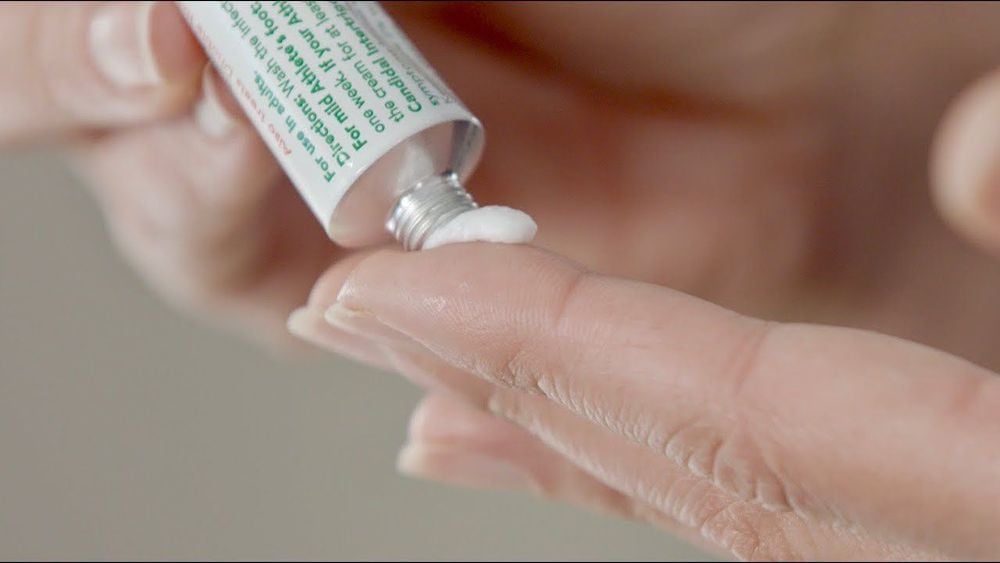
Sử dụng thuốc bôi để ngăn ngừa khô, nứt, giảm ngứa và trầy xước
Proper skin care includes cleaning the skin and using skin-protective drugs. Prevents dryness, cracking, relieves itching and scratching, which is important for preventing the development of skin ulcers. Topical formulations may contain moderate corticosteroids.
4.2. Contact dermatitis Sensitive contact dermatitis occurs more easily in areas of stasis dermatitis. Contact dermatitis in chronic venous insufficiency is common and can be difficult to diagnose without a high index of suspicion because it often mimics stasis dermatitis or cellulitis. Symptoms include redness, itching, and the formation of blisters and blisters. Patients with contact dermatitis often do not improve with treatment. Some patients develop an eczematous rash anywhere on the body. Contact dermatitis may also be a direct trigger for the development of ulcers in patients with venous insufficiency. Regular use of systemic or topical antimicrobials may also increase the incidence of contact dermatitis.
Allergic contact dermatitis can range from sensitization to a wide range of products used in the treatment of stasis dermatitis and venous ulcers; therefore, avoidance is the primary precaution.
5. Ulcer care
Chronic venous ulcers are difficult to control. In addition to providing appropriate therapy, topical treatment of chronic venous ulcers includes the use of basic wound care techniques (dissection, dressing) to minimize infection and facilitate heals but also addresses problems that affect the patient's health, such as odor, bleeding, itching, excess, and pain.Wound cleaning: An essential part of venous ulcer management. The presence of ulcerated tissue increases the likelihood of local infection and infection, reduces the rate of wound healing, and reduces the effectiveness of topical therapies and systemic antibiotics. Removal of necrotic tissue and fibrous debris in venous ulcers, using surgical, enzymatic or biological methods, aids in the formation of healthy granulation tissue and enhances recurrence. Systemic antibiotics should only be used in patients with clinical signs and symptoms of acute cellulitis or ulcerative infection. Routine use of antibiotics in uncomplicated ulcers does not reduce bacterial colonization or improve healing rates and induce resistance. Systemic antibiotics are used when one or more of the following signs and symptoms suggest a significant infection: Fever, congestion of the skin around the ulcer, lymphadenitis (red patches moving up the extremities) , increase the size of the sores quickly. Take care of the sores with daily cleaning of Cadexomer iodine in the right concentration for ulcer care. A topical cream or a bandage containing silver can be used. Prevention of infection and healing of venous ulcers with silver sulfadiazine - silver sulfadiazine. Studies of other topically applied antiseptics, including peroxide-based compounds, povidone-iodine, acetic acid, and sodium hypochlorite, were ineffective in disinfecting and healing venous ulcers, because So not recommended to use.
Dressing sores: Bandages are an important component of ulcer care. Bandages control secretions, maintain moisture balance, control odor, and help control pain. The dressing also maintains an environment that facilitates epithelialization and accelerates ulcer healing. Options for venous ulcers include semi-adhesive membrane, non-simple dressing, paraffin gauze, hydrogel, hydrocolloid, alginate, and dressing or impregnated with silver.
Maintain venous compression after ulcer healing to minimize ulcer recurrence.
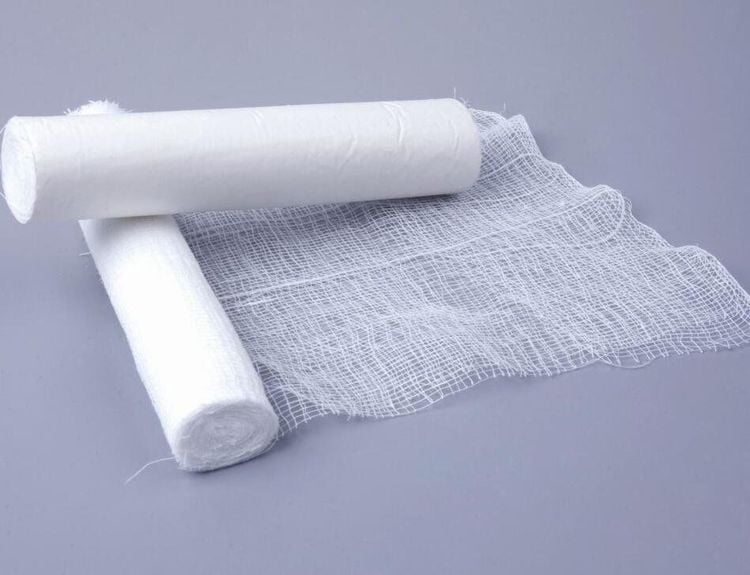
Băng gạc giúp kiểm soát dịch tiết, duy trì cân bằng độ ẩm, kiểm soát mùi và giúp kiểm soát cơn đau
6. Some other measures
Several growth factors play a role in wound healing, including platelet-derived growth factor, epidermal growth factor, and fibroblast growth factor.Intradermal injections of granulocyte colony-stimulating factor (GM-CSF) appear to promote healing of chronic leg ulcers, including venous ulcers. The use of GM-CSF in the skin is limited due to the pain of injection.
A novel cell-based topical therapy consisting of keratinocytes and fibroblasts (HP802-247) and delivered to the wound surface via fibrin spray media has been used to treat wounds, including chronic venous ulcers.
Skin grafting: Can be used for very large venous ulcers or for ulcers lasting more than 12 months
A systematic review of clinical trials has determined that dual-layer artificial skin Combined with compression bandages increase ulcer healing compared with compression and simple dressing. Human skin equivalents should not be considered a substitute for initial compression therapy for venous ulcers but may be considered in patients who are unresponsive to compression therapy.
Several human skin equivalents made from human keratinocytes, human fibroblasts, and connective tissue proteins are available for the treatment of venous leg ulcers (eg, Apligraf, Dermagraft, Integra). The graft is applied fairly easily in the outpatient setting.
Patients with persistent ulcers (more than 6 months) or those with recurrent ulcers should have intravenous doppler ultrasound to determine if vein ablation is needed for treatment.
Chronic venous disease is quite common, causing complications and affecting the quality of life of patients. Therefore, it is necessary to have a suitable treatment regimen to prevent worsening, especially venous ulcers. Methods of leg elevation, exercise, and compression should be applied early. Skin care and systemic drugs are suitable for the patient. Patients need to make positive lifestyle changes such as weight loss, a reasonable working and living regimen to prevent and limit the disease.
Vinmec International General Hospital is the address for examination, treatment and prevention of diseases. When performing the examination process at Vinmec, customers will be welcomed and used modern facilities and equipment along with perfect medical services under the guidance and advice of experts. Good doctors, well-trained both at home and abroad.
Customers can directly go to Vinmec Health system nationwide to visit or contact the hotline here for support.
MORE:
Treatment of varicose veins of the lower extremities with laser Treatment methods for chronic varicose veins of the lower extremities What is venous insufficiency? Is it dangerous





